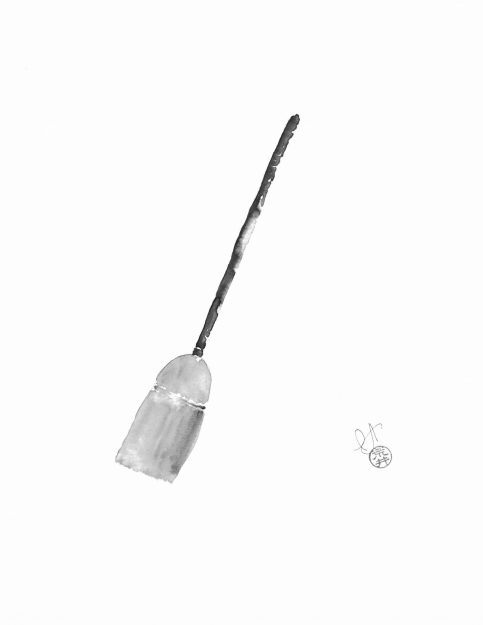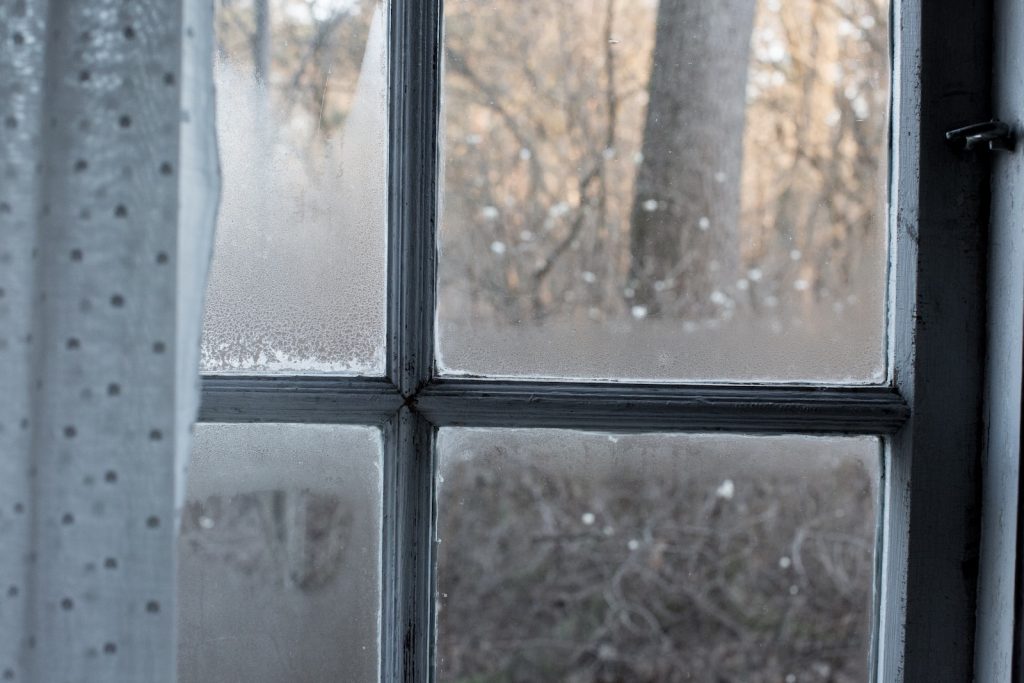While living at the nunnery, I was responsible for cleaning the wood floors of the second story every morning. I learned to wring rags extremely tightly, so no drips of water would inadvertently drop on the floor. Several reprimands later, I also learned to scour the floor with my eyes to see if any drops had errantly fallen, and if so, to wipe them up before I finished. I learned precisely where to place my hands on the rag to maximize the rag’s ability to clean the floor and maintain my balance while running “downward-dog” fashion across the floor.
There was a small fire extinguisher in an out-of-the-way corner that I had to move aside to get to the floor under and behind it. I questioned why it was necessary to clean it every day. I decided a square inch of floor being less than perfectly clean inconvenienced no one. I also figured that no one would know anyway, so I only cleaned behind the fire extinguisher on alternate days. I launched my private rebellion due to discomfort with hot and humid conditions. Sweat rolled down our faces just sitting still. Vigorously cleaning floors left me drenched. Yet the traditional monastic regulations dictate bathing only six days a month, days with a four or nine in the date. After nearly two months of being jealous that the floors got to be cleaned every day, I was utterly surprised when a senior nun mentioned to me that I needed to clean the dust behind the fire extinguisher every day, not every other day.
Perhaps such thoroughness comes across to you as obsessive or just plain weird, but the fact that I am even sharing this story from 1989 reflects the lasting impact it had on me. My resistance to dusting behind the fire extinguisher had little to nothing to do with the dust. Rather, it revealed my resistance to the complex causes and conditions that had brought me to the nunnery. The nun’s intervention in my relationship to that one square inch of floor illuminated for me my lackluster gratitude for a rare opportunity to do fascinating research that was helping me learn to embody compassion and expand my perspective. It also helped me see how my body-heart-mind was so out of balance that inconveniences to my body (heat, humidity, pain from sitting formal Japanese style––I developed calluses on my insteps from sitting with my shins on hard wood floors for extended lengths of time) distorted everything I perceived. I had so narrowed my view that all I could see were things I did not like. A nun had cared enough about me to pay attention to my cleaning. She helped me see that a private disgruntlement was visible in my cleaning. Teaching in a Japanese Zen context is done through keen observation of bodily activity, for it expresses the activity of the heart.
I have come to appreciate how cleaning with rags can be a healing activity that is easily integrated into daily life. Rags are exemplary at being in the present moment. They do not stray from here and now. They accept their function without question or reservation. Rags demonstrate magnanimous mind in the way they wholeheartedly plunge into dirty buckets and soak up gooey messes. They never resist touching the “dirtiest” things. They work to the full extent of their capacity, no matter how long they are scrubbing floors, wiping tables, or dusting surfaces. The human wielding the rags will surely tire before the rags do. Even if rags are worn with holes, they still do as much as they can. All rags seem to have mastered being themselves. They exude equanimity while they clean. Rags manifest nurturing mind, for everything they touch is an act of care. Treating the cleaning cloths mindfully, as I was taught to do at the nunnery, I began to feel intimate with the rags that I wrung out every morning and afternoon while living there.
***
Zen Master Dogen (1200–1253) is the recognized founder of Soto Zen in Japan, the sect in which I have done my Zen practice. His teachings offer inspiration for approaching cleaning in a way that is healing: When you take care of things, see with the eyes of the heart, even if sometimes it means seeing beyond the surface. When you are cleaning the floor of the bathroom, do not feel displeasure. Even when you are dusting precious art, do not take on an attitude of delighting in opulence. When you encounter stubborn stains, do not be at all negligent. When you clean smooth wood surfaces, be all the more diligent. Never alter your state of mind based on the objects you are cleaning.
Life is what I am making it, and I am what life is making me.
Let’s return to the example of rags as we look further at Dogen’s teachings on this state of mind, sometimes translated as “total dynamic engagement.” When cleaning with a rag, I wet it with water, I wring it out, I fold it, and I wipe tables and floors with it. I am moving the rag, and at the same time, the rag is moving me. There is no “I” beyond the rag. Through my cleaning with the rag, this rag is being caused to be a rag. At this very moment, there is nothing other than the world of the rag; the bucket, the water, the floor have all become the moment of cleaning with the rag, which is utterly different from moments not cleaning with a rag. Life is what I am making it, and I am what life is making me.
Cleaning requires heightened attention to the things in our midst and foregrounding connections through touch and time. Each thing we touch can be a meditation on interdependence. I suspect that the COVID-19 pandemic has made interdependence much clearer to many of us. Contagions turn points of contact––doorknobs, faucet handles, and one’s own face––into high-stakes activity. Who was here before me? Who will come after me? Was the last thing touched a possible source of sickness? Who might touch it next? Cleaning is a concrete way to express compassion by minimizing risk to others around us. In other words, to protect ourselves from a virus, we must protect our compassion. Each day, especially during a pandemic, provides ongoing opportunities to contemplate the intricacy of connections with strangers and loved ones and endow cleaning with the moral weight of compassionate living.
And we don’t need a pandemic or any other special condition to practice cleaning with this kind of intentionality. Cleaning is an inherently body-heart-mind integrating activity, and so it abounds with healing possibilities. No mucky mess will clean itself by sheer force of mind. (If only it did.) You must move your body in ways that involve the mind effectively responding to present conditions. Singular focus on a task offers the pleasure of immediate release from troubling preoccupations. The respite is like a fresh breeze that gently ushers you along with the flow. Gratitude for things to clean can sweeten the task, transforming a chore into a joy-filled communion with beloved items that support your life and enliven your home. Tidying a home yields immediately observable results: a more harmonious environment, even beauty. Envision the benefits rippling out, such as preventing mold and mildew from harming loved ones, composting to transform organic waste into plant food, or clearing out dried vegetation to minimize fuel for wildfires. This expanded perspective of the intimacy of our connections can quicken the compassion that beats in your heart.
Healing glistens on carefully washed windows. It sparkles in a clear, spot-free glass of water. It shimmers on mindfully mopped floors.

Holding an old broom,
My troubled heart awakens.
Cosmic dust glitters.
♦
From The Little Book of Zen Healing: Japanese Rituals for Beauty, Harmony, and Love © 2023 by Paula Arai. Reprinted in arrangement with Shambhala Publications, Inc. Boulder, CO. www.shambhala.com
Thank you for subscribing to Tricycle! As a nonprofit, we depend on readers like you to keep Buddhist teachings and practices widely available.
